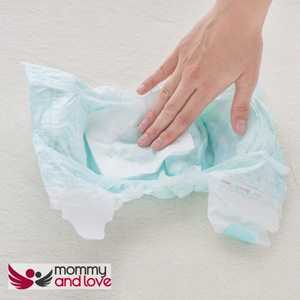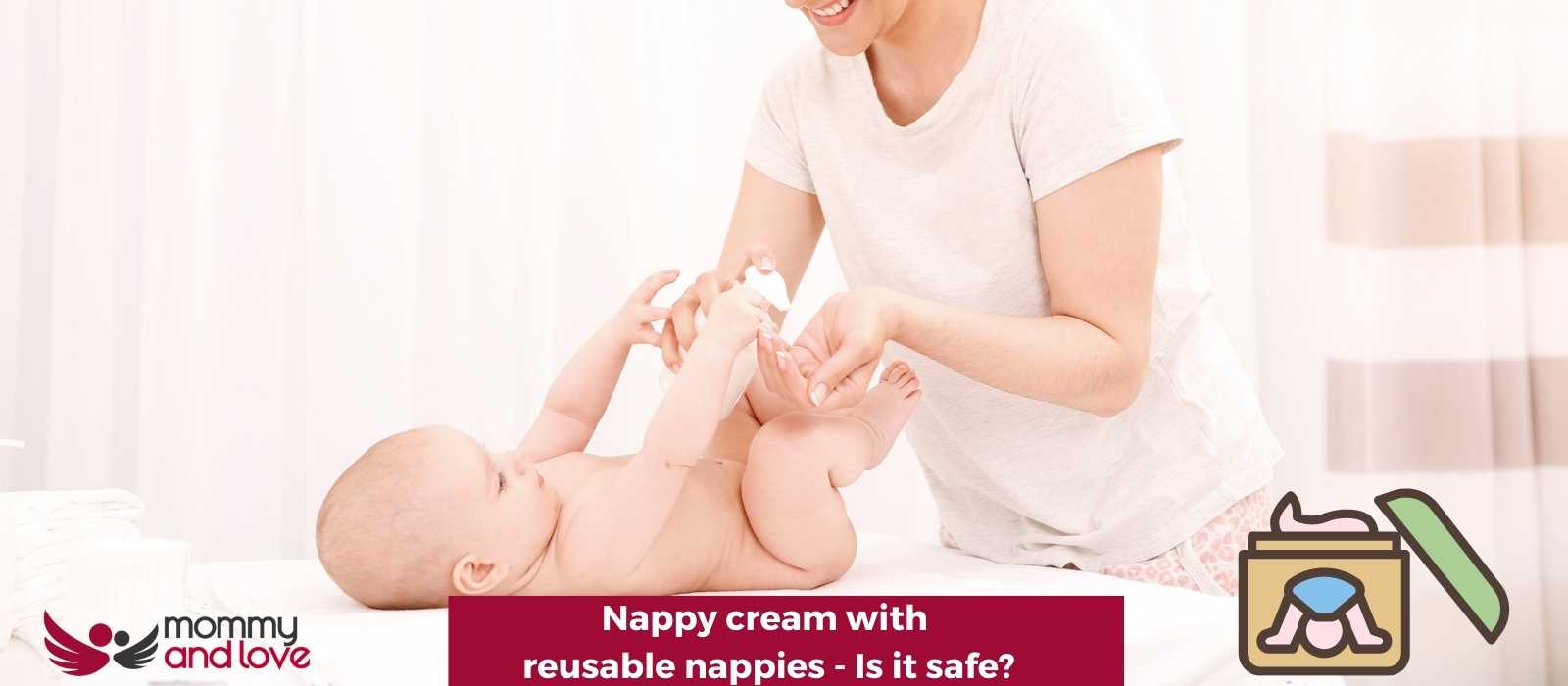Your baby has a nappy rash and you don’t know what to do. First of read our advice on nappy rash and what might be causing it. But if you need to use nappy cream on your nappies, there is a wide range of opinions on whether you can, you can’t or something or anything in between.
Some will say that you can use any cream as long as your wash routine is adequate; others will say that you should avoid certain creams (including most of the thickest barrier creams) because they can coat the fibers of your nappy and reduce absorbency. I am by no means an expert on the matter, but if you have ever attempted to get Metanium out of muslins, baby grows, or your trousers, you will know that it can be difficult to deal with at times.
Is zinc a problem for cloth nappies?
If you use cloth nappies, you may have heard that zinc-based nappy lotions are not recommended for use with cloth nappies. This, according to the know it alls on nappy groups, generates a buildup on the fabric of the nappy, resulting in the nappy becoming less absorbent.
It is not the end of the world if a small amount of zinc appears to have gotten on your nappies. It is not the zinc itself that is the problem; rather, it is the oil that it contains. Because the oil becomes stuck in the fabric of the nappies, the absorbency of the nappies is reduced.
For the same reason, you should avoid using fabric softener when washing cloth diapers. It contains oil, which penetrates the cloth and remains in it for a long period of time. Because oil repels water, you end up with cloth nappies that are incapable of absorbing wee.
You may experience problems with cloth diapers if you use an oil-based diaper rash cream, regardless of whether it’s a natural zinc nappy cream or one that contains petrochemicals. This is because oil-based diaper rash creams have a tendency to diminish the absorbency of cloth nappies. Just to be clear, petroleum-based diaper creams will contain substances such as mineral oil, paraffin, petroleum, petrolatum, and vaseline, to name a few examples.
If this occurs, you will need to strip wash your cloth nappies in order to restore them to their maximum absorbency level.
You might be surprised at the number of natural nappy creams which actually contain zinc:
Burt’s Bees Diaper Ointment
Weleda Calendula Nappy Change Cream
Weleda Rash Relief Cream
Weleda White Mallow Nappy Change Cream
Zinc might be needed because it could be the wet nappy causing the irritation. A fleece liner will really help to keep the baby’s skin nice and dry but if you are using any zinc creams, keep them away from the cloth nappy both in the nappy bin and when washing nappies. Just do them separately! This goes for any wipes you are also using to clean bums. It’s worth having a separate wash for your fleece lines and wipes and doing two loads in the washing machine!
Should I switch to disposable nappies?

The answer that disposable advocates will always suggest is to switch to using disposable nappies as that will get rid of all nappy rashes, which are clearly caused by cloth nappies.
Except they aren’t. If cloth nappy caused nappy rash we would not have had any in the last 40 years when disposable nappy usage has been prevalent.
Cloth nappies MAY cause some rashes, but generally, it’s down to teething, reaction to powder or just not cleaning well enough. So no, you don’t need to switch to disposables unless you are sure it’s an issue with your cloth.
Embrace Liners – Fleece or Disposable!
Having said that, I strongly recommend the use of a liner of some sort with any nappy creams, merely to provide an extra layer of protection for your nappies, as even some of the cloth-safe creams have been discovered to cause-specific fibers to grey over time.
You would be better off giving your baby plenty of nappy free time and when applying nappy rash cream ensuring that you are using either fleece liners or a paper liner between the baby’s skin and the cloth nappy. If you’re using a reusable liner and an oil-based diaper cream, you may need to wash the liners separately from the nappies in order to prevent bacterial growth. It is possible that the oil will migrate to the nappies while they are being washed, putting you back where you started.
What natural creams are best for nappy rash and cloth nappies?
Coconut oil
Coconut oil is one of the most inexpensive and straightforward products you can apply on your baby’s bottom. During the day, I don’t usually apply anything to my daughter’s bottom unless she’s got a rash, which isn’t very frequent, but at night, I cover her in Organic Coconut Oil to function as a barrier cream, because she’s going to be in her nappy all night. It performs an excellent job and has a pleasant scent as well. A lovely natural oil, but again oil may cause repelling issues.

Weleda Calendula Nappy Cream
When it comes to cloth nappies, Weleda Calendula cream is completely safe to use. I used Welada a lot when my daughter was a newborn, and this calendula diaper cream was a wonderful barrier cream for a baby. We use it whenever we experience teething rashes or soreness, and it seemed to help things calm down again. Weleda Baby Calendula Nappy Cream does contain zinc but it is a water-based one so doesn’t cause the usual issues. Really gentle on babies bum and babies skin.

Balmonds Baby Balm
Belmond’s Skin Salve is a skincare product made by Balmonds. Beeswax is used to seal in moisture in this rich, oil-based formula. Dermatologist-recommended for those with sensitive skin. There are no synthetic ingredients, perfumes, parabens, or paraffin in this formulation. Balmonds Skin Salvation is safe enough for baby’s bum and legendary at helping clear nappy rash.

Take Away
Petroleum-based products are not great in use with cloth nappies, and not something I want to put near my baby’s skin. But all-natural oils and zinc creams can cause repelling issues. Always use a fleece liner that wicks moisture away and that will help and if worst comes to the worst and you end up with creams on your nappies you can do a strip washing routine to help you get them back! Paper liners will help but remember fresh air is a baby’s bum’s best friend!

This article was written by: Gian MIller – Full-Time Writer, Baby Whisperer & Dad of 3.
Gian spends a lot of his time writing. A self-proclaimed baby whisperer, Gian has been through it all with his own children and is passionate about sharing his hard-won wisdom with other parents. When he’s not writing or changing diapers, you can find him playing the guitar or watching baseball (or preferably both at the same time).




